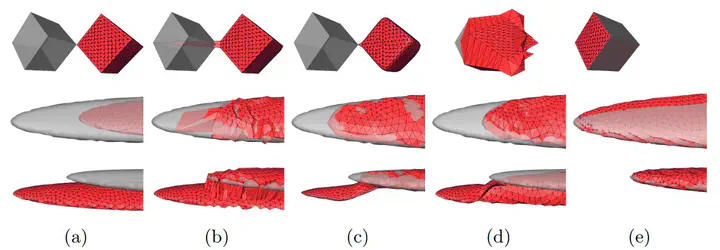
Abstract
Deformable surface models are often represented as triangular meshes in image segmentation applications. For a fast and easily regularized deformation onto the target object boundary, the vertices of the mesh are commonly moved along line segments (typically surface normals). However, in case of high mesh curvature, these lines may intersect with the target boundary at “non-corresponding” positions, or even not at all. Consequently, certain deformations cannot be achieved. We propose an approach that allows each vertex to move not only along a line segment, but within a surrounding sphere. We achieve globally regularized deformations via Markov Random Field optimization. We demonstrate the potential of our approach with experiments on synthetic data, as well as an evaluation on 2x106 coronoid processes of the mandible in Cone-Beam CTs, and 56 coccyxes (tailbones) in low-resolution CTs.
Dagmer Kainmueller was nominated for “MICCAI 2010 Young Scientist Award” for this work.